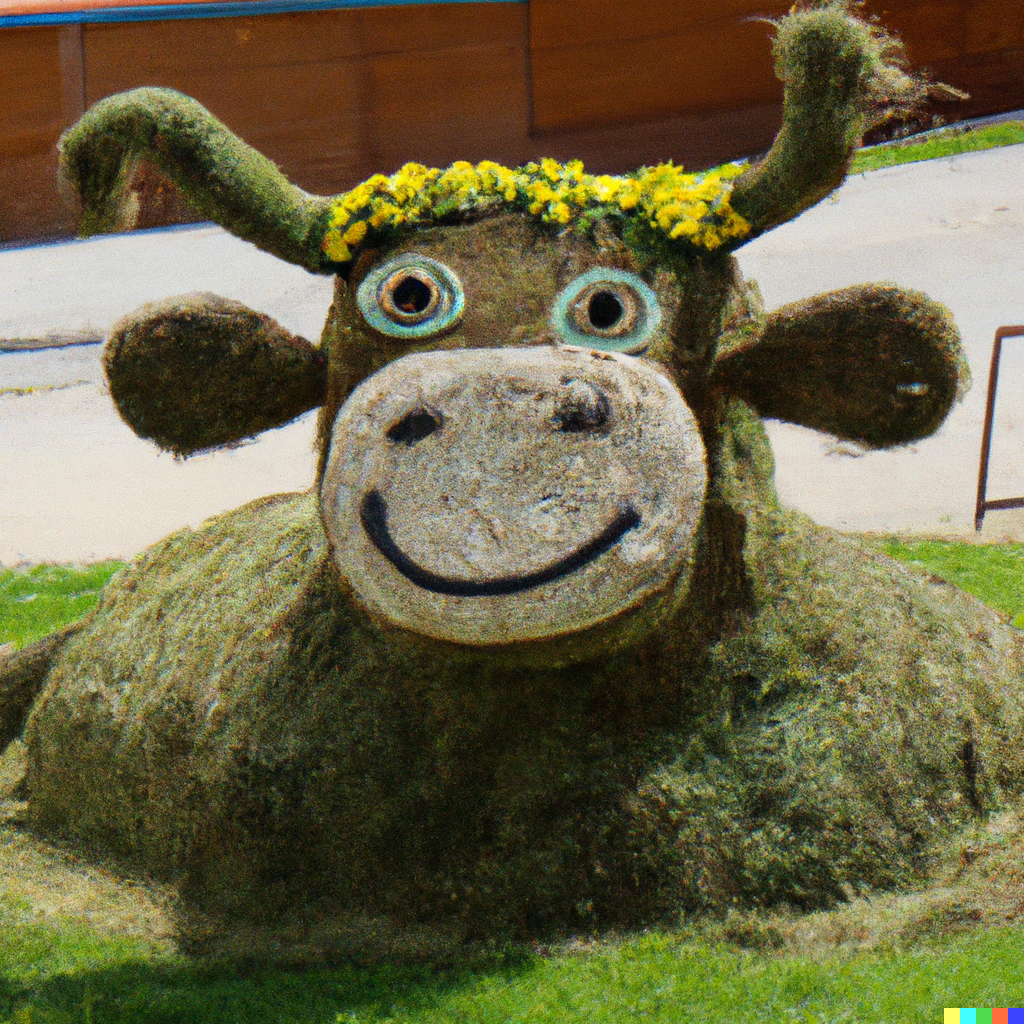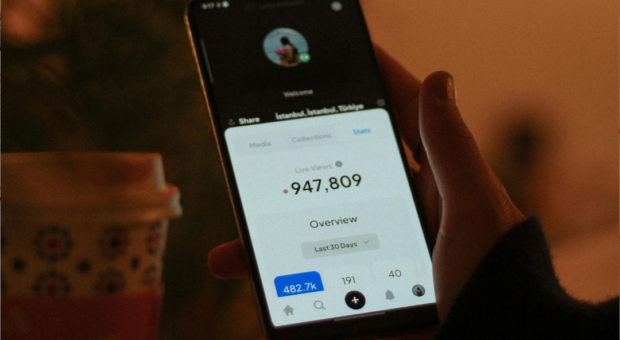
Categories:
It’s been interesting to watch the progression of intelligent software systems that have begun to mimic human intelligence, and the part they’ve come to play within the marketing space over recent years. One of the early examples was when Augmented Reality entered the market, taking the customer experience world by storm and giving audiences a fresh way to experience products by overlaying computer rendered imagery on reality. We explored some AR capabilities in our recent blog post, How to Use Augmented Reality in Your Marketing Strategy. While AR has proven effective in providing consumers with a seamless brand experience, the conversation has slowly shifted to other forms of Artificial Intelligence – most recently, to systems called Generative AI, with the power to generate creative content of all kinds, even entire advertising campaigns – from short and carefully constructed prompts using precise terminology to guide the AI.
Rather than trying to explain what Generative AI is, let’s ask ChatGPT, an AI system recently released that has taken the world by storm. We’ll ask it to “Write a summary of what generative AI is and how it works. Put it in the context of uses in marketing, and write it for an audience of professional marketers.” Here is how ChatGPT answered that prompt, explaining itself to us:
“Generative AI is a form of artificial intelligence that is used to generate content. It works by using deep learning algorithms to create models of data that can produce new, original content. By studying a set of data, the AI is able to recognize patterns and use them to generate new content that is similar to the original data set. This can be used to generate text, images, and even video.
“Generative AI has a number of potential applications in marketing. For example, it could be used to generate new images or videos for advertising campaigns, or to create written content such as blog posts, product descriptions, or copy for emails. It can also be used to create personalized content tailored to individual consumers, such as product recommendations or targeted ads. Generative AI can help marketers save time and resources, allowing them to quickly create new, engaging content that resonates with their target audiences.”
Generative AI has recently begun to take hold, fascinating, delighting, and at times, concerning creative marketers who continue to find ways to leverage the power that these programs provide. From creative production to full-blown creative ad campaigns, these systems continue to challenge marketers at all levels to explore and consider the possible applications, and shortcomings, of utilizing this emerging technology. You may have even noticed some bigger brands that have hopped on the AI bandwagon – like the Bacardi-owned brand, Martini. The spirits brand was the first to launch a creative campaign with imagery generated entirely by AI. While we know that AI is not coming for your creative job (yet!), it’s clear that these increasingly intelligent platforms hold tremendous promise within the creative space.
Let’s take a closer look at exactly how the AI-supported creative process works, and explore the potential these systems have to save creative marketers a lot of time and money while enhancing the creative process.
The Download on Generative AI
As we already know, Artificial Intelligence is becoming increasingly proficient at imitating human creativity, which means marketers have the opportunity to use this valuable tool in a variety of ways:
- Automated Content Generation. This one is a given, as we know that AI is capable of automatically generating all sorts of content, and it can create an end product based on the instructions contained in the supplied prompt. This alone can be a valuable time-saving tool for marketers who create content regularly.
- Increased Content Variety. Since AI has vast amounts of the world’s text and image content digested into its large language models to work from, the programs are capable of generating a large variety of content. Examples of content generation include short- and long-form copy (for social media posts, blog posts, email marketing, etc.), and complex still images and video, all of which can help businesses to create a more diverse range of content. This may give the marketer a different perspective on the content they are seeking, as AI has the ability to supply output that is surprisingly unique.
- Personalized Content. Lastly, AI models are able to generate personalized content based on user preferences. The content can be created to target certain audiences and interests, which can be a valuable tool to the marketer.
While AI is able to generate some invigorating creative content, not all of it is final-product perfect. Remember that this is not a perfect machine system, even though it’s getting pretty close. So, how exactly can you manipulate the machine to receive content that’s closer to a desired end product? The answer lies in your approach.
Machine Learning & Prompt Building
This brainbusting software might be a fun new space to explore, but there are still many facets of the system that need to be understood to utilize the AI tools to your advantage. These include:
Machine Error
The idea that AI has the potential to replace the creative process as a whole is a far stretch. From what we’ve experienced, there still seems to be a need for some form of human involvement throughout the lifespan of an AI-generated project. This means that no “final product” from the machine is tight enough to be deemed a deliverable from our human creative department. A lot of the time, creative professionals end up reworking the AI content to give it the additional lift it needs to bring it over the finish line. While these systems are intelligent, they seem to have difficulty picking up on certain nuances one may request — such as linguistic humor, which is still primarily a people thing. Human faces are another piece it can’t seem to get right, producing images with distorted faces or gaggles of limbs; again, it’s a learning system, so hopefully these are factors that will be corrected over time.
Prompt Structure
Prompt engineering is the only way for you to communicate to the AI system exactly what type of content you’re seeking. AI seems to be extremely sensitive to the sequences in which you structure your prompts, especially on the visual side of things. When creating the anatomy of your prompt, make sure to be specific when it comes to detailing:
- Content Type (could be a photograph, drawing, or sketch)
- Description (e.g., a happy, brown, female cow dancing in a field)
- Style (could be accent lighting, realistic detail, or abstract art style)
- Composition (could include, but not limited to, aspect ratio, camera view, and resolution)
This allows you to produce a final prompt that looks something like this:
A photograph of a happy female cow wearing a yellow sundress dancing in a solar field under direct sunlight, contemporary, digital art
Free Trials vs. Subscriptions
Unfortunately, payment is required to work with some of these applications. While some deep learning models such as DALL-E 2 offer free trials or “credits” which refill every month, you can buy additional credits in 115-generation increments for $10-20 depending on the AI system. If you’re just looking to experiment with AI, you could likely just get by on the free trial. But if you’re looking to do some trial and error to play with different variations of the content it produces, looking into a payment option might be your best option.
Approved for Commercial Use
Some AI systems like DALL-E have updated their licensing terms, making it possible for marketers to use the AI-generated materials in commercial work. This is something the condiments brand, Heinz, was quick to hop on, using the platform to generate its highly buzzworthy “This is What Ketchup Looks Like to AI” ad campaign. While the campaign generated some unique hype around the ketchup brand, it proved to those watching that businesses could really benefit from partaking in this technological advancement, especially when noting how audiences responded to it.
Creative Ideation at Ethos
We at Ethos have had our fair share of fun over the past couple months as we’ve continued to master the science behind these platforms — specifically, the art of prompt building.
In a recent creative ad campaign, we were asked to create a sustainability campaign that heavily focused on a sense of place for a local milk brand. Our creative team supplied many different structured prompts into multiple AI systems, keeping them more on the simple side to see how each platform differed in its results:
Prompt entered: “happy cow made of grass on a sunny day”
DALL-E generated more reality-based images, including:



MidJourney generated more digital art-based images, including:



We’ve been leaning heavily on AI platforms like DALL-E, MidJourney, and Runway, which we’ve found to have less intricacies than others.
While none of these images were used in the final campaign concept, they were still able to spark some great jumping-off points for creative campaign ideation, allowing us to further explore different creative directions.
The Bottom Line
Generative AI is an extremely useful tool to help creative teams delve deeper into ideation by using these platforms as inspiration. Similar to the whiteboarding process, but more refined, AI lays the groundwork for you by generating products or ideas which you can then marry together, or pick apart. You can even play with variations on a certain theme, putting the same AI-produced content back into the machine to seek something slightly similar or different. No matter what direction you choose to go with it, these applications have proved to be a massive time-saver in terms of rough creative sketching and starting a content project from the ground up. While these systems still have a lot to learn, it can’t hurt to try and crack the code on how to get the sharpest AI output for your projects, as the uses and benefits of Generative AI are exponentially increasing.
Looking to learn more about Generative AI? Get in touch with us to learn more about this fascinating tool.
About Ethos
Ethos is a multiplatform branding agency that develops and executes integrated marketing campaigns across multiple channels for companies inside and outside of Maine. At Ethos, we believe that the most effective way to set a company’s marketing course is by finding its core truth – its ethos. We know that once we discover and communicate that core truth, we can truly make a difference for each client’s unique marketing and business objectives. With Ethos, you get more than a marketing agency. You get a long-term partner whose goals are your goals. Learn more about the Ethos approach and the work we’ve done for our clients. Want to have a conversation about your brand’s core truth? Contact us today!


